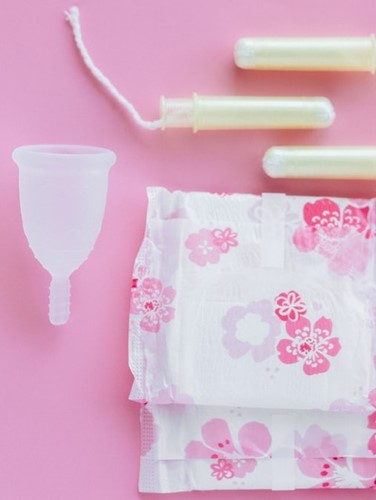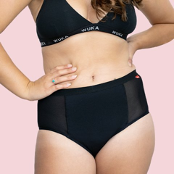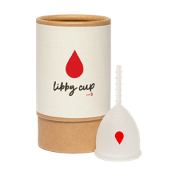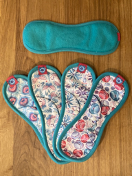Have you ever thought about the environmental impact of menstruation?
On average women use 22 sanitary products per menstrual cycle. That’s 286 sanitary products per year and 10,868 per lifetime.

That’s a lot of plastic!
Let’s start with sanitary pads.
- Normally they are individually wrapped in plastic packaging.
- They generally have a thin, flexible, leak-proof base made from polypropylene or polyethylene (aka plastic).
- They have a sticky layer (made from plastic) to enable you to stick the pad to your underwear, sometimes they even have plastic wings.
- They have thin polyester fibers in the pad itself to soak up the blood into the absorbent core.
MOST SANITARY PADS ARE MADE FROM 90% PLASTIC
What happens to sanitary pads once they have been used?
They are flushed down the toilet.....this blocks drains and sewers.
They are thrown away and end up in landfill......they take between 500 and 800 years to decompose.
Now what about tampons?
- Some come individually wrapped in plastic.
- Some have plastic applicators.
- They have a string made from plastic.
- They can contain plastic in the absorbent part to help soak up the blood.
Again, lots of plastic and what about disposal, they are flushed down the toilet.....again this blocks drains and sewers.
Recycling.....Plastic applicators can technically be recycled but let's be honest who puts them in the recycling? Also they often not accepted due to sanitary reasons
Back to landfill.....it takes up to 500 years for a tampon to decompose.
It’s not only the amount of plastic found in disposable sanitary products that's the problem. It's also the amount of energy used in manufacturing and shipping these items.
The same amount of carbon dioxide is produced from a year's supply of disposable sanitary products as is produced by charging a mobile phone more than 1000 times!
So what are the alternative options if you want to consider the environmental impact of menstruation?
- Free bleeding - ie. not using any products. This obviously won’t suit everyone and is very dependent on the length of your cycle and how heavy your flow is.
- Period pants - these are just like normal pants but with an absorbable gusset. They are reusable and you can buy them in a range of styles to suit from thongs to briefs to boxer shorts. After wearing they need a rinse in cold water, you can then machine wash them at 30/40 degrees with other dark coloured items and then air dry. Personally I think these look amazing and I wish I had known about them after giving birth to my children as I think they look brilliant for postpartum bleeding. I also think they would be great for teenagers for managing those first periods.

- Menstrual cup - a small funnel shaped cup made from a flexible material that is placed inside your vagina. It can be worn for up to 12 hours at a time before taking it out to empty and clean and then reinsert. Once you have got used to it, it is no harder than inserting a tampon.

- Reusable pads - you can buy washable sanitary pads in the same range of absorbances as standard pads. Once used you rinse them in cold water and then can pop them in with the rest of your laundry and wash at 40 degrees.

- Organic tampons - these are made from natural materials like organic cotton and as such decompose quicker than standard tampons although it can still take between 6 months to 5 years for them to decompose.
And if the environmental impact of ‘standard’ sanitary products hasn’t convinced you to look at the alternatives I will just briefly mention the cost.
A few quick calculations:
- If you use applicator tampons which cost approximately £2.00 for 20 you would spend around £30 a year on sanitary products. A menstrual cup costs approximately £20 and lasts for 2 years saving you £40 over 2 years.
- If you use sanitary pads these cost approximately £1 for 16. That’s approximately £18 a year you spend on sanitary products. Reusable pads cost approximately £6 each. It is recommended that you buy about 10 pads - £60. They last for approximately 10 years meaning a saving of £120 over 10 years.
Refills by Beez stocks a range of reusable sanitary products that can be delivered to your doorstep with your cleaning product and toiletry refills if you live in Bicester or a surrounding village.